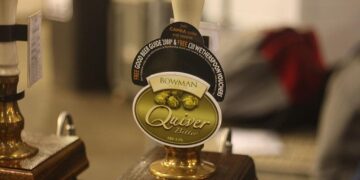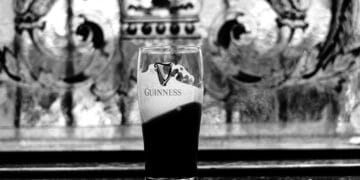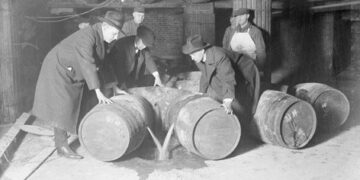Where once Czech beer production was richly diverse, it is now 99.9% lager, but there are promising signs that the beer market is starting to diversify once again.
Golden Lager Nation
The Czech Republic is justly celebrated across the world for the superior quality of its beer, but in ‘beer’ we invariably mean lager. We mean beer brewed with bottom-fermenting lager yeasts at colder temperatures and for longer periods – we mean Pilsner Urquell, Staropramen, Gambrinus and Budweiser Budwar, lagers now brewed on an industrial scale for pubs across the nation and beyond, and synonymous with the term ‘Czech Beer’. With approximately 95% of production being golden lagers and 5% dark lagers, the Czech Republic may have quality but it doesn’t boast much in the way of choice.
It wasn’t always like this. Little over a century and a half ago, Czech brewing culture was a radically different beast to that of today. In an upside down reversal of brewing styles, top fermenting beers were instead the norm.
Pre-Lager Czech Beer Culture
Although it is not completely clear what pre-lager Czech beers were like or what they were brewed from, it is suggested that ales, characterised as brown, murky and sour, were prevalent as well as rye beers, Bavarian-style Bocks and even wheat beers.
In fact, although historically associated with Bavaria, wheat beers were also hugely popular with their Bohemian neighbours to the extent where was a leading tipple for a significant period. It was recorded as being brewed at the brewery in the town Breznice – current home of Herold – as far back as the sixteenth century.
Bottom-fermented beers were by no means a new phenomenon in the 19th century and had long played a minor role in Czech brewing culture. However, the clear golden lager style popular today only really began when the first drops of what would become Pilsner Urquell were produced in Plzen 1842 by the German brewer Josef Groll.
Brewing Revolution and National Awakening
The shift from top fermenting beers to low fermenting lagers was less a slow evolution than a brewing revolution, akin invading forces annihilating the indigenous population. Lager brewing began its decisive spread from 1840 when the Prague brewery U Primasu started brewing bottom-fermenting beers and Pilsner Urquell made its immediately successful first appearance. Between 1860 and 1870 alone, more than 260 ale breweries were killed off, while lager breweries rose in number from 135 to 831.
However, the dramatic rise of pilsner was not believed to have crushed a thriving beer culture. Three centuries on from its boom period in the 16th century, Czech beer was believed to have been in a somewhat forlorn state, suffering from centuries of Germanization and decline – not least from the devastation wreaked by the Thirty Years’ War. The rise of lager beer coincided with the ‘national awakening’ movement when the Czech language, culture and beer were reinvented to re-establish Czech identity.
Modern Czech Brewing Culture
Although pale lagers still rule the roost in the modern Czech beer landscape there are encouraging signs that they are rediscovering their pre-lager revolution roots. There was little hope for renewed brewing diversification during the Communist era when there was minimal investment in the nation’s breweries.
Most significantly recent years have seen wheat beers make a welcome return to Czech pubs. This wave began when Pivovar Herold introduced a modern wheat beer in 2002, and its momentum was maintained by the Primátor brewery’s popular wheat brew, and by many brewpubs now brewing their own versions.
Modern brewpubs themselves, where beer is brewed and drank on the premises, are another aspect of old Czech beer culture that has made a resurgence in recent years. Since the 1990s a considerable number of brewpubs have opened in Prague alone. There is also an increasing demand for unpasteurised beer.
Primátor has also helped usher in a new era of diverse beer styles in other ways, having introduced its own pale ale and more recently the country’s first proper stout. Innovative new breweries like Pivovar Kocour offer hope for the further diversification of Czech beer such in producing – in addition to stout and pale – Scottish ale, American IPA and Rauchbier (a German smoked beer).






















































